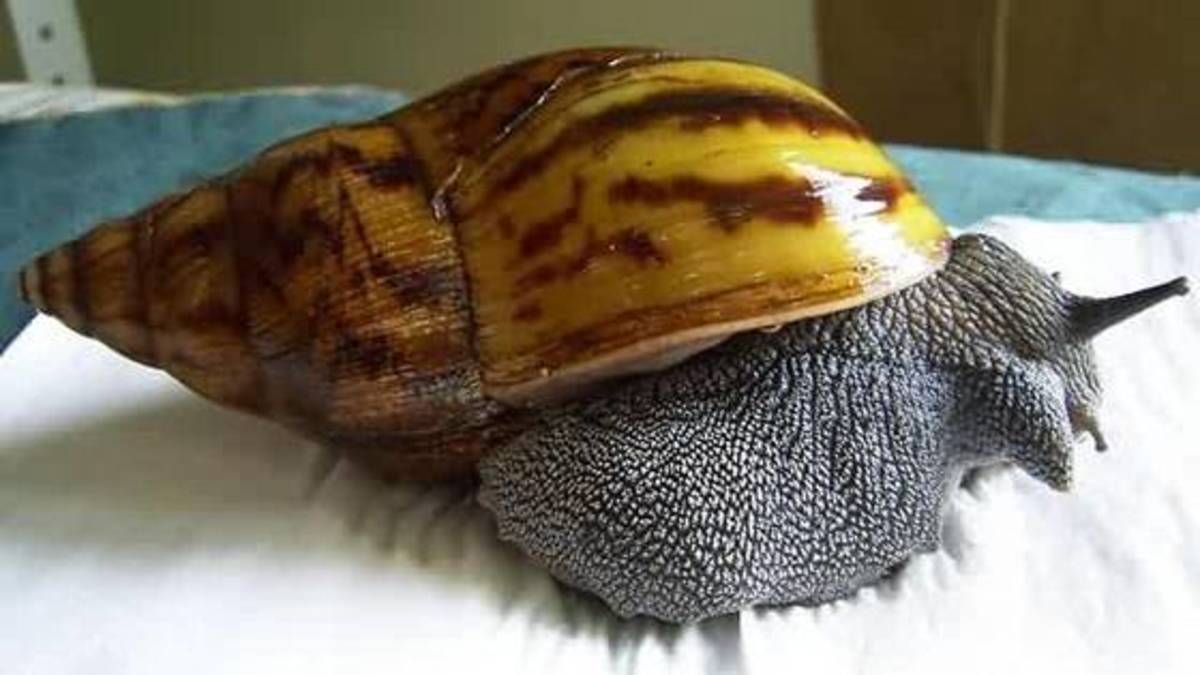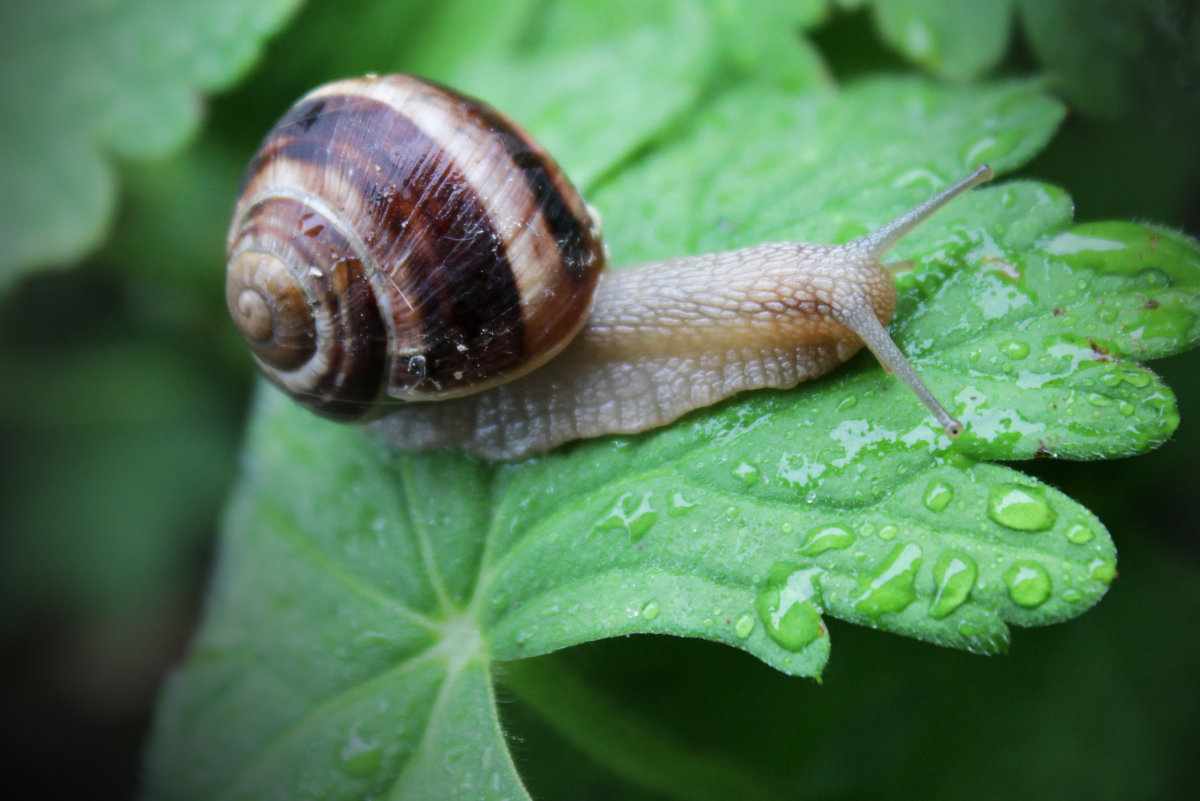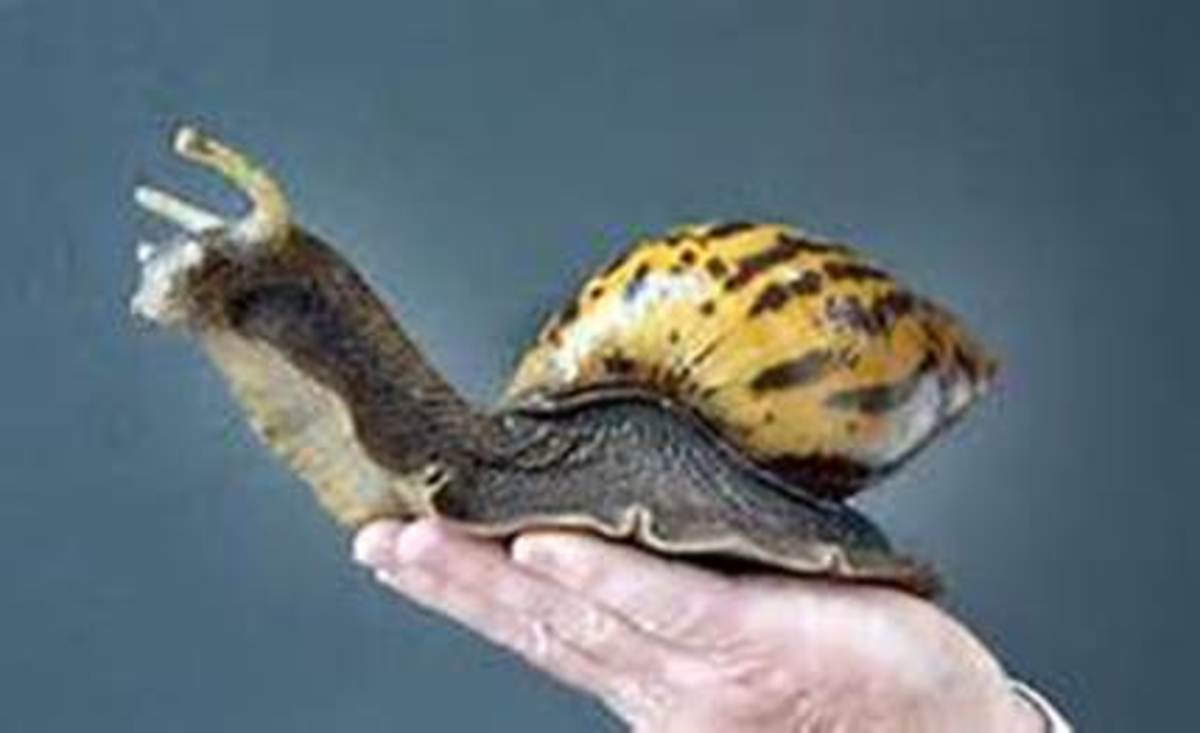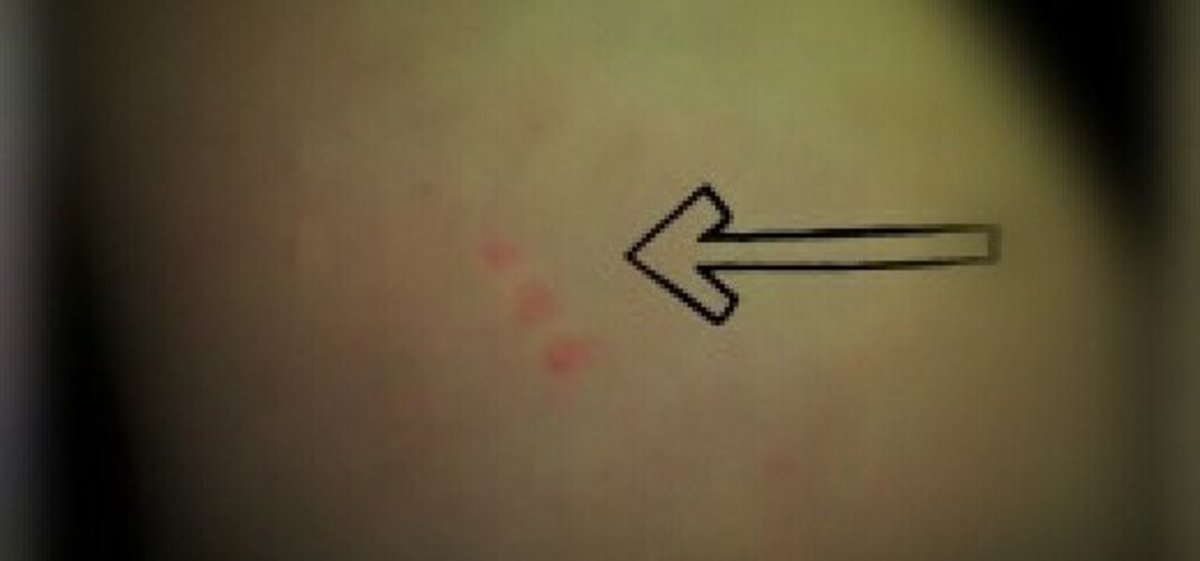- HubPages»
- Education and Science»
- Life Sciences»
- Entomology»
- Insects & Bugs
Giant African Land Snail
Genus Achatina

Giant African Land Snail Description
Of all the land snails the biggest one is the Giant African species. They are quite rare though so you won’t see them very often. In fact many people will only see pictures of them online or in books. No matter how you see them though take some time to carefully examine the vertical stripes on the shell. You will notice that they are a darker color of brown then the actual shell. They also form some very interesting patterns.
Even though the Giant African Land Snail is the largest such snail, it is still a very small type of animal out there. They can be as small as 3 inches with the largest ones being about 10 inches. They can live from 6 to 10 years but the life is very hard on them so they generally are at the lower end of that span instead of the higher end of it. They tend to have a shorter life span in captivity as they temperature may not be ideal, they don’t get enough moisture, or their diet lacks calcium.
Snail Facts...
- The Portal of Life on Earth - Amazing Animal Facts
Amazing Animal Facts - The Portal of Animal Diversity. Visual index of animals. Dolphins, Whales, Penguins, Sharks, Tigers, Elephants, Flamingos, Otters, Killer Whales, Seals, Sea Lions, Sea Turtles, Polar Bears, Walruses, Squids, Manatees, Snails, G - Facts about Snails
Snail Facts and Information. Feeding, habitat, distribution, reproduction, anatomy and more. What do snails eat? How do snails reproduce? What is the Life Cycle of a Snail? And more.
Giant African Land Snail Anatomy
The radula is very important for the Giant African Land Snail and this is found on their tongue. It features some small spikes that also allow it to pick up food with ease. They are able to sense movement around them through the various vibrations that they pick up. They are able to smell very well and that is a great part of how they identify food sources or danger.
The slow but steady movements of these land snails is the result of their muscles in the feet. They have spasms that run down the length of them and that is how they are able to successfully move forward. In order to do so they must have a slipper substance of mucus that is on the ground. They are only able to move forward though and not backwards. It can take a great deal of time for these snails to progress along a very short distance.
They have a shell which actually has a total of four layers to it. They will sleep in this shell and also spend time in it when they feel that they may be threatened. The shell is hard but it also needs enough moisture for them to be able to survive in it. The shell grows along with their bodies so the size if to will be proportional to their needs. The shape of the shells though can vary significantly among them.
Giant African Land Snail Behavior
There isn’t too much to share when it comes to the behaviors of the Giant African Land Snail. They are very slow which we have already covered. They communicate through giving off scents and through the vibrations that they pick up. They tend to be alone with the exception of mating. It consumes all of their time to be able to eat, to rest, and to move when they need to.
The one very interesting thing about them has to do with hibernation. Like other known animals they can hibernate in the colder times of the year. This helps them to survive the cooler temperatures. It also helps the to survive the time of year when it can prove to be very difficult for them to find enough food.
However, they are among a very select group of animals that will actually hibernate at times due to the extreme heat. Due to their need for moisture when it is drought conditions they may do so or their shells will dry up. They can give off a protective coating of mucus to seal the shell and their bodies from the conditions outside.
There may one day be more that we learn about the behaviors of the Giant African Land Snail. However, for right now there doesn’t seem to be much going on in the way of getting information. Research in this area is hard to come by.
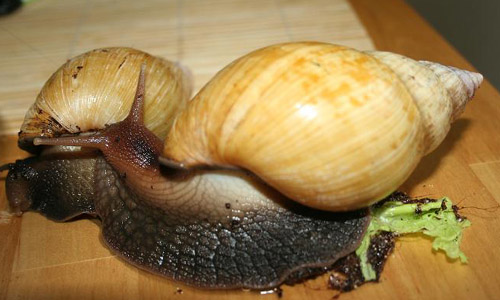
Amazing Animal Facts
- Flamingo Facts
Flamingo Facts and Information. Feeding, habitat, distribution, reproduction, anatomy and more. Facts about Species like the Greater Flamingo, Lesser Flamingo, American Flamingo and others.
Giant African Land Snail Habitat
Africa is the native location of the Giant African Land Snail. They need to have temperatures of at least 65 degrees. They also need an area that offers some moisture in the air. There are some areas where they were once no longer found but they have been introduced there again. Among these locations are Saint Lucia, Barbados, and the Caribbean. So far these land snails have been thriving in these newly introduced locations.
There are plenty of places where the Giant African Land Snail is not welcome though. Among them is the USA due to the amount of damages that they can quickly create for the crops there. In the past there have been big enough problems for it to take years and millions of dollars to get rid of them. Generally this happens when people bring them back from Africa or they buy them from pet stores.
These land snails should never be turned out into the wild. Instead you should report them to the animal control in your area. As long as you are doing so you won’t be facing any charges or fines. However, if you are found to have them illegally you can be in serious trouble so don’t get involved with that.
Giant African Land Snail Feeding Habits
They mainly feed on plants and depending on the time of year various types of fruits. They don’t need to be able to find very much food to survive though. Of course it can consume a great deal of energy for them to get to the food. That is why they often don’t venture very far from it. They have great coloring that allows them to blend with the surroundings easily.
One aspect of their diet that they do need to have though is calcium. Without it they will die. If they can’t get it from their food sources then they need to consume part of their shell in order to get enough of it. They do need some intake of water too. However, they can generally get it from the foods that they consume.
More Animal Facts...
- Octopus facts and information
Feeding, anatomy, reproduction, predators, defenses, intelligence, senses and all the information about octopuses. - Tiger Facts
Tiger Facts and Information. Feeding, habitat, distribution, reproduction, anatomy and more. Facts about Species like the Siberian Tiger, Bengal Tiger, Sumatran Tiger and many others. - Manatee Facts
Manatee Facts and Information. Feeding, habitat, distribution, reproduction, anatomy and more. Facts about Species like the West Indian Manatee, Amazonian Manatee and others.
Giant African Land Snail Reproduction
Most people don’t know it but the Giant African Land Snail is a hermaphrodite. This means that they have the organs for both sexes in their own bodies. You can’t have offspring with out two of them. However, it is possible for them to play both roles so both of them will likely end up depositing eggs in the near future. It is amazing when you think that each of them can deposit up to 1,200 eggs per year.
Giant African Land Snail Predators
There are tons of predators out there waiting to consume the Giant African Land Snail. Some of the most common ones including ground beetles and caterpillars. What they are victim to though often depends on their location as well as the time of the year. While they do have a hard shell many of their predators have no problem with penetrating it to get to the meal.
Many people in Africa hunt these land snails so that they can feed on them. They also sell them to other entities which is how they get what they need to survive. However, it is dangerous to do so because of the various types of parasites that they have been associated with them. Anyone eating them does need to make sure they are cooked very well first.

